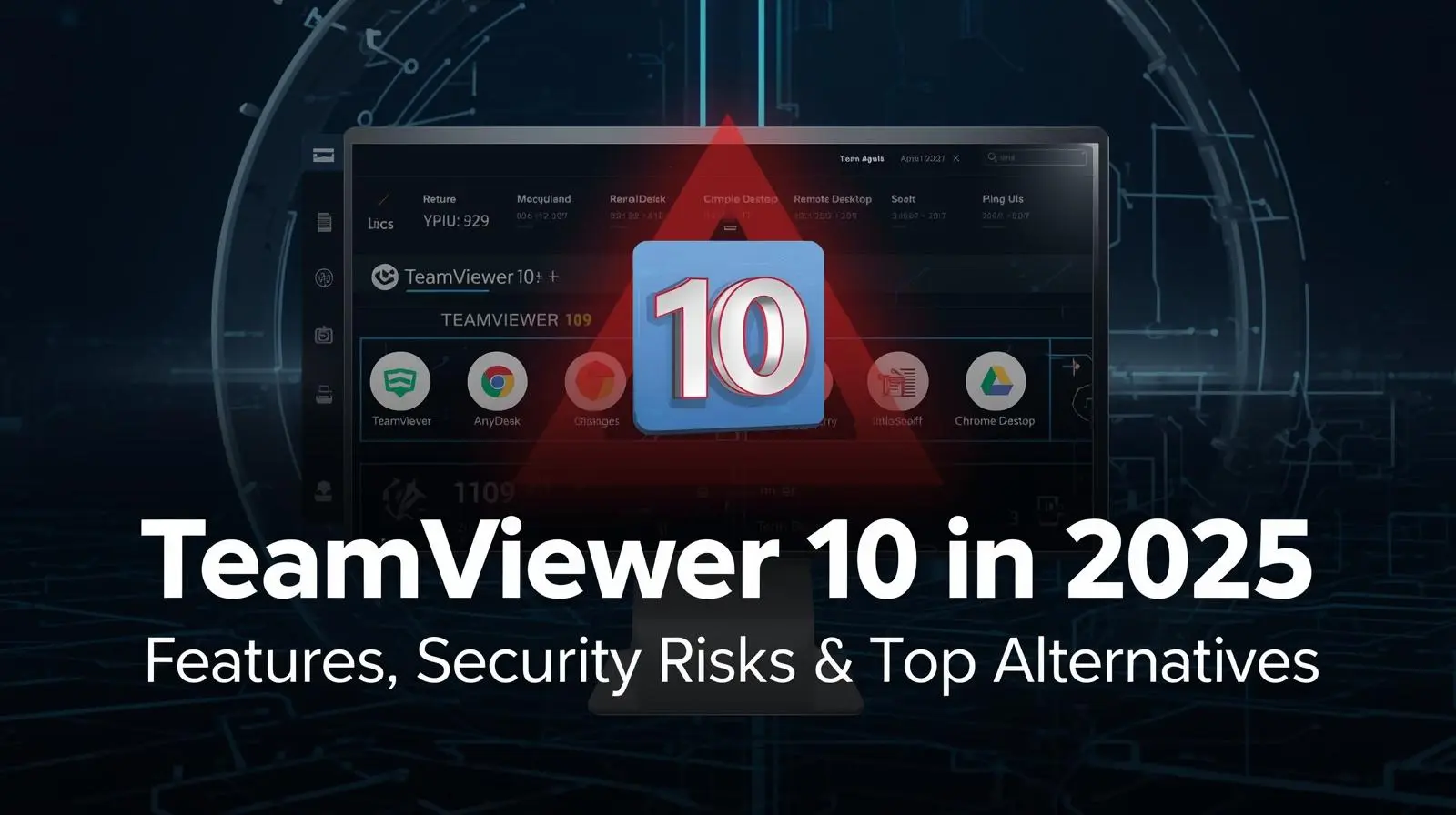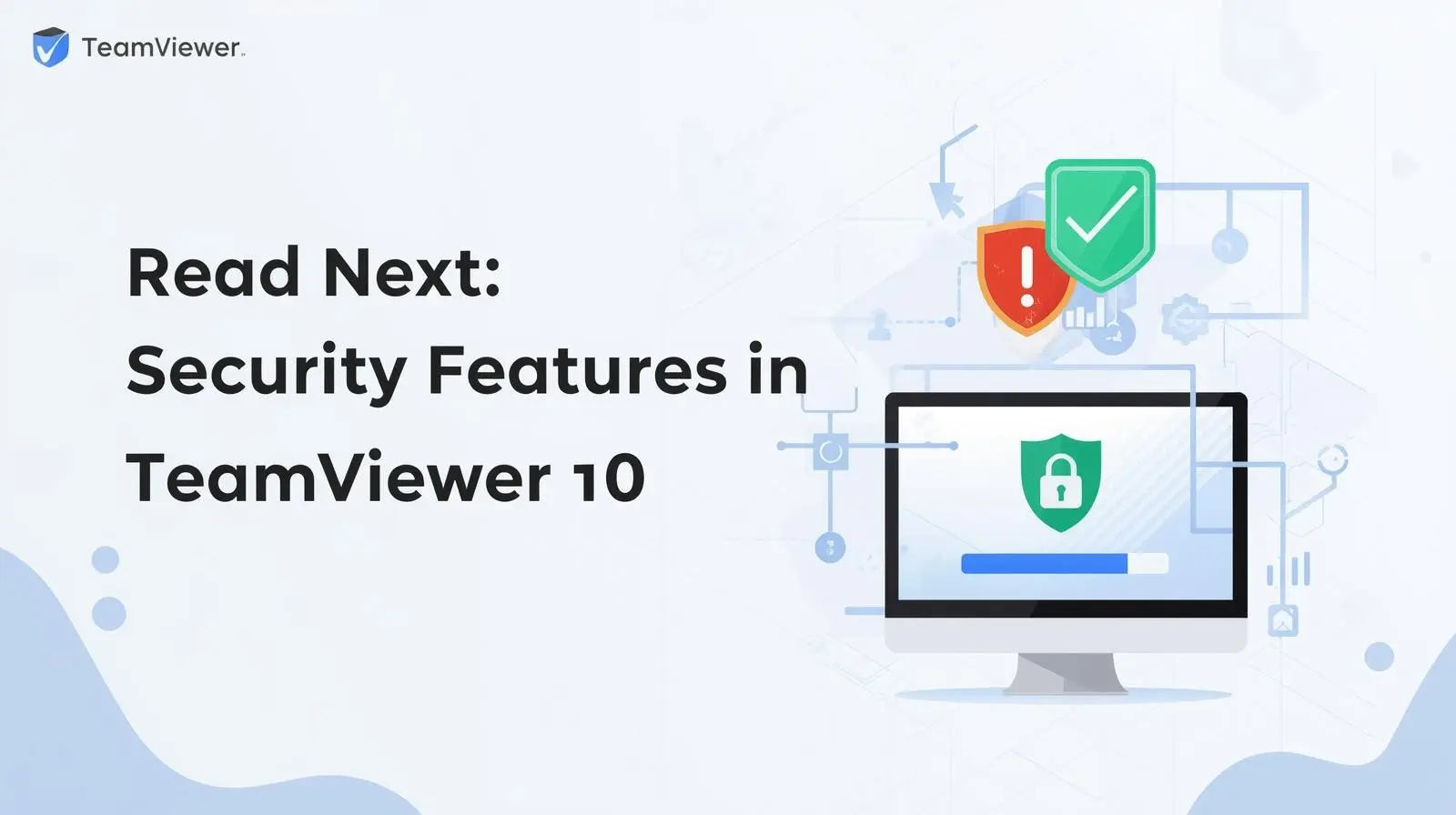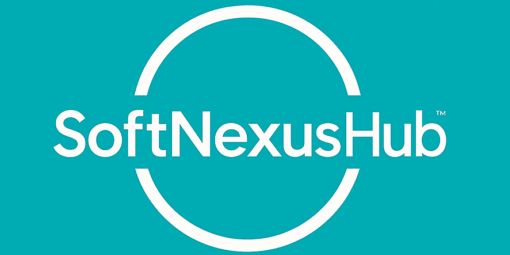
When you think of remote desktop software, TeamViewer 10 is often one of the first names that comes to mind. Launched in late 2014, it quickly became a trusted tool for IT professionals, small businesses, teachers, and even families who needed quick technical help. At the time, it felt revolutionary because it was lightweight, easy to use, and offered more than just remote access—it was also a collaboration tool.
But here’s the truth: in 2025, TeamViewer 10 is outdated, no longer supported, and comes with serious security risks. Yet, many people still search for it, either out of curiosity or because they’re working with older hardware. To really understand its importance—and why upgrading is the safer choice today—let’s dive into its features, pros and cons, security setup, and the best alternatives available now.
What Was Special About TeamViewer 10?
TeamViewer 10 wasn’t just a minor update. It introduced tools that made remote work and online collaboration smoother than ever. Some of its key highlights included:
- Remote control made easy: Connect to another device by entering a unique ID and password.
- File transfers: Share large documents and media files seamlessly between devices.
- Collaboration features: Chat, video calls, and even a whiteboard tool for real-time annotations.
- Optimized performance: Designed to work on both low-end PCs and modern 4K displays.
- Cross-platform support: Worked across Windows, macOS, and even mobile devices.
For its time, it was ahead of the curve, making remote work less frustrating and far more efficient.
Security Features in TeamViewer 10

One reason why businesses trusted TeamViewer 10 was its built-in security. It came with:
- AES 256-bit encryption for secure data transfers.
- RSA 4096-bit key exchange to protect session authentication.
- Temporary session passwords that expired after each use.
- Whitelists and blacklists to control access rights.
While this was impressive in 2014, cybersecurity standards have advanced significantly since then. Protocols like TLS 1.0 and 1.1, which TeamViewer 10 relied on, are no longer considered safe today.
Why TeamViewer 10 No Longer Works Online
If you’re trying to run TeamViewer 10 today, you’ll notice it doesn’t connect to the internet. That’s because on June 1, 2021, official support for versions 9 and 10 ended. Since then, connections through TeamViewer’s servers have been blocked.
The only way to use it now is on local networks—meaning both devices must be on the same LAN. While this is useful for labs or legacy setups, it makes TeamViewer 10 impractical for remote IT support in 2025.
TeamViewer 10: Pros and Cons
To give you a clearer view, here’s a table comparing the advantages TeamViewer 10 had when it launched versus the drawbacks of using it today:
| Pros (2014–2020 era) | Cons (2021–2026) |
|---|---|
| Clean, user-friendly interface | No longer supported or updated |
| Dependable remote desktop access | Security vulnerabilities remain unpatched |
| Stable performance, even on slow networks | Cannot connect to TeamViewer servers |
| Lightweight and worked on older PCs | Incompatible with latest operating systems |
| Useful features like chat and whiteboard | Outdated encryption protocols (TLS 1.0/1.1) |
As you can see, what was once a reliable tool has now become a risk if used for internet-based remote access.
Why You Should Upgrade Instead
Using TeamViewer 10 in 2025 poses serious risks. Hackers often target outdated software since it lacks security patches. With known vulnerabilities like CVE-2020-13699, attackers can exploit weak encryption and steal credentials.
On the other hand, upgrading to the latest version or switching to a competitor provides:
- Multi-factor authentication for stronger account security.
- Modern encryption standards for safe communication.
- Cross-platform compatibility with Windows 11, macOS Sonoma, Android, and iOS.
- Advanced collaboration features like mobile-to-mobile control and cloud integrations.
Best Alternatives to TeamViewer 10 in 2025
If you’re ready to move on, here are the most reliable and secure options today:
1. AnyDesk
Created by former TeamViewer developers, AnyDesk is lightweight, fast, and optimized for low-bandwidth connections. Its DeskRT codec ensures smooth video and audio during sessions.
2. Splashtop
Known for its high-quality remote sessions, Splashtop is a favorite among businesses that need scalable performance. It also supports remote printing and secure file sharing.
3. Chrome Remote Desktop
A free tool from Google, Chrome Remote Desktop is browser-based and easy to set up. It’s perfect for casual users who need simple, occasional access without costs.
4. RustDesk
An open-source alternative, RustDesk is gaining popularity for its transparency and privacy. Users can even host their own server for complete control over connections.
5. Zoho Assist
A professional remote support solution, Zoho Assist integrates with the broader Zoho ecosystem. It’s great for IT teams and managed service providers.
Other enterprise-grade solutions include ConnectWise ScreenConnect, BeyondTrust Remote Support, LogMeIn, and RealVNC Connect, each offering features designed for security-conscious businesses.
Conclusion
The short answer is no. While TeamViewer 10 was groundbreaking when it first launched, it is now outdated, unsupported, and unsafe for online use. Continuing to rely on it could expose your systems to serious risks.
That said, it still holds historical importance. It helped pave the way for modern remote access solutions and normalized remote IT support long before remote-first work became standard.
In 2026, however, the smarter move is to upgrade to a supported version of TeamViewer or switch to an alternative like AnyDesk, Splashtop, or RustDesk. These modern tools give you the speed, security, and compatibility needed for today’s digital world.
FAQs
Q1. Is TeamViewer 10 still working in 2026?
No. TeamViewer 10 can no longer connect to TeamViewer’s global servers since support ended on June 1, 2021. It only works on local networks, meaning both devices must be on the same LAN.
Q2. Can I still download TeamViewer 10?
Yes, archived versions can be found on some third-party websites. However, downloading and using TeamViewer 10 is not recommended because it is outdated, unsupported, and carries security risks.
Q3. Is it safe to use TeamViewer 10 today?
Not really. Since it no longer receives security updates, TeamViewer 10 is vulnerable to exploits like CVE-2020-13699. Hackers often target old software, so using it online in 2026 is unsafe.
Q4. What were the main features of TeamViewer 10?
TeamViewer 10 offered remote desktop access, file transfers, chat, video calls, a whiteboard tool, and support for 4K displays. It was also lightweight, making it ideal for older PCs at the time.
Q5. What are the best alternatives to TeamViewer 10 in 2026?
Some of the top alternatives include AnyDesk, Splashtop, Zoho Assist, Chrome Remote Desktop, and RustDesk. These options are more secure, faster, and compatible with modern systems.
